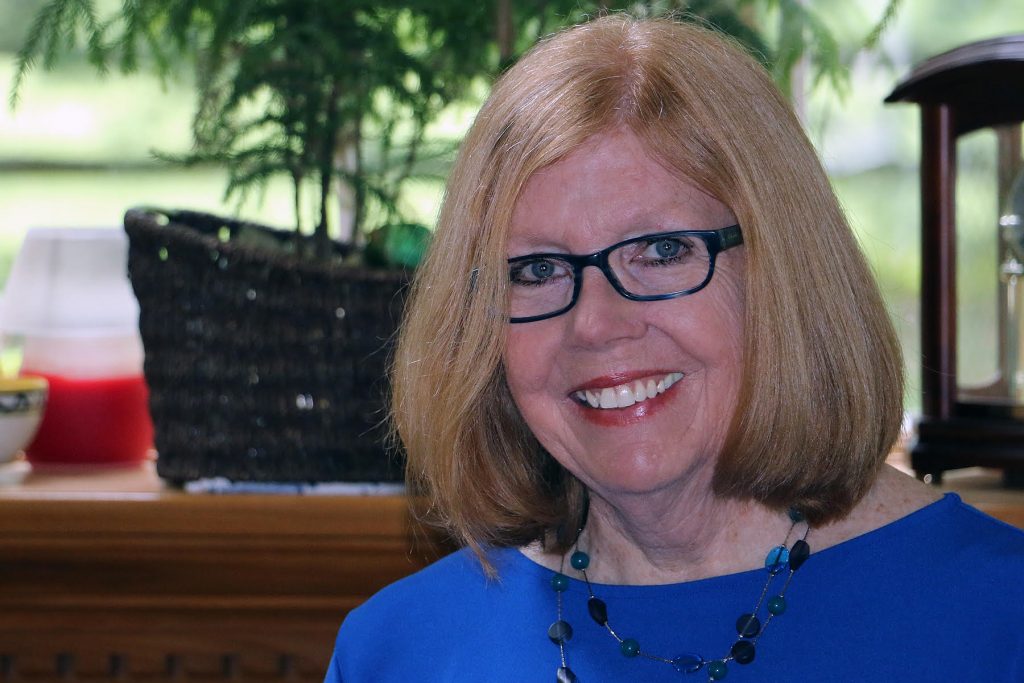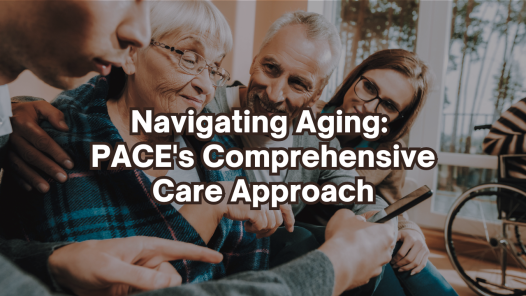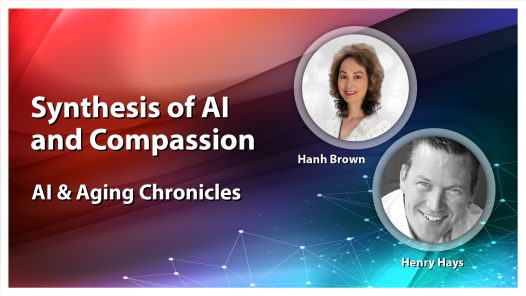
Please join me today as I talk with Patricia Faust MGS, CAt, Director of Initiatives for Successful Senior Aging at Wellness Wishes Incorporated. She is a Gerontologist/Brain Health Specialist; her focus is on the health and function of the brain. As a gerontologist she understands the impact of the Baby Boomer Generation and economic and medical landscape.
She has a master’s degree in gerontology and a nursing home administrators license, which allows her to understand the needs of the residents, the state and federal regulations for Long-term Care / Memory Care units. Patricia offers solutions to out-of-the-box problems and believes ultimately, it all comes back to the brain.
Hanh Brown: [00:00:00] Thank you so much for being here.
Patricia Faust: [00:01:55] I’m really honored to sit here and talk with you. This is great.
Hanh Brown: [00:01:59] So, please share with us your journey and how you got started in.
Patricia Faust: [00:02:03] All right.
[00:02:04] Well, I was working in medical sales and I was calling on. Long-term care. I was actually a certified orthotic fitter. I worked with occupational, physical therapists, and most of the people I saw four people had dementia and they didn’t have memory care. Then this was back in the nineties, they were in lockdown units. [00:02:26] They called them. And so I was appalled by all of that. So I went back to school and got an undergrad at Joi degree. And. Gerontology. I got my nursing home administrators license, and then I went ahead and got a master’s degree in gerontology. I wanted to make a difference with people who had dementia. So it’s been an ongoing, gosh, I never worked as an administrator, but it gave me the inside understanding of what nursing homes, how they have to comply and how they have to provide care. [00:02:59] And it still discouraged me. So I was the aging in place. Let me go back a little bit. I was the aging in place director for a small area agency on aging and Southeast Indiana a few years ago. And that’s when I really got to look at senior living outside of institutional living because I was calling on people who wanted to stay in their homes and they might need modifications. [00:03:26] But the other thing that they needed was their linked to staying connected with other people. So part of what I did was looked at this was now more rural area where a lot of these issues are more difficult to take care of because people live so far apart. And they don’t like to leave their farms, but they didn’t do aging in place. [00:03:48] What they did is when they thought they were too sick to take care of their farms, then they went right into a nursing home and then they ended up losing their farms because they didn’t have insurance. They were farmers in which they pass their property down from generation to generation.Hanh Brown: [00:04:05] Well, that is unfortunate that the folks did not protect their assets.
[00:04:09] So who took over the assets of the land?Patricia Faust: [00:04:12] These were family farms. So all of that just really was disturbing to me because they didn’t know about anything else. And so I brought in an elder law attorney to talk about how to hold onto your property. Even if you go into a facility, the steps you needed to take in order to maintain.
[00:04:35] What they owned instead of going right into a nursing home. And Medicaid just took everything after the person died. It was a huge turnout for the seminar, but I just saw so many people losing their family land. So that got me to thinking about how do communities start to adjust to this older group of people? [00:04:57] Because Southeast Indiana sort of skews older than the national norm anyway.Hanh Brown: [00:05:02] Wow. That’s unfortunate after losing a family member. Then losing the assets that should have been passed down to the next generation.
Patricia Faust: [00:05:09] And everybody was sort of working on their own. Nobody had put anything together to have a concerted effort to take care of their aging population.
[00:05:17] The largest number of people who died, died from Alzheimer’s disease complications from Alzheimer’s disease. And so they weren’t equipped to take care of any of that. There were no geriatricians in Southeast Indiana. And there was one outer law attorney, so their needs were being met. So I started working with communities and giving them some ideas on how they can start to connect people and look out for the older population. [00:05:48] And clearly part of it was. Just looking at say, one little town is a little tourist town, a riverboat stops there. People get off the river boat and they go through all the shops and everything. Their main street is very wide and their lights turn really quick.Hanh Brown: [00:06:05] It sound like you were instrumental in turning a small town where the elders were disconnected.
[00:06:10] You work with the community in pulling them together to make the city more elderly friendly.Patricia Faust: [00:06:15] And so you weren’t even across the street before the light turned green. And I said, make this a walking friendly town, because that’s what most of your people are doing. Let people sit at the lights for awhile.
[00:06:27] So these were easy changes that didn’t require a lot of money. It just required rethinking how they had set up all of their services. The other thing was making people walk instead of drive, became a movement. Started back in the nineties when I was at. And now this was in the last decade. Well, in two thousands, when I was at the agency where they were trying to get small towns to have walkable towns. [00:06:55] And so people would not be driving so much and how main street merchants could actually make more and how it be healthier for the people.Hanh Brown: [00:07:04] So, it sounds like you were emoting the seniors to become more independent in their later years and to help them stay in their home.
Patricia Faust: [00:07:11] Keeping in mind, the clients that they were actually looking for.
[00:07:15] And so in Indiana, there was a big push to make main street, leaving street and make it very walkable. And they were giving away grants and everything. So my approach to senior living became more about how to become more independent in how you’re living your later years, understanding that aging in place. [00:07:35] If you’re sick, is. More dangerous than if you went into a facility because you tend to become isolated. You can’t take care of your property. And so learning all the nuances of keeping an older population in their homes, but sort of something that I really looked into at that time.Hanh Brown: [00:07:54] So what’s the progress of the town, the people in the land.
[00:07:59] And the people’s mobility around the town.Patricia Faust: [00:08:01] They’ve changed streetlights. They’ve got a strong senior center, a lot of senior programming going on. They are a historic town, so they’re really delving into the history of the area so that people feel some ownership. If they’ve lived there as to how long they’ve been there.
[00:08:20] And they have now have a say in a lot of the decisions that are made, the walking lights are now. You can hear them as well as see them and they count down. So you know how long you have to get across the street. And they put in dedicated, left turn lanes because older people sometimes have a really difficult time with distances. [00:08:43] And so instead of having them try to judge and scoot over to make a left turn, the left turn lanes really take away a lot of that danger that might exist.Hanh Brown: [00:08:54] Wow. So the changes in my mind are major for the city to accommodate the elderly population.
Patricia Faust: [00:09:01] The other things are the congregate living sites.
[00:09:04] They’re independent living sites. They’ve taken like old schools and made them into really nice apartments and they have people who congregate there. So the big part about this older population of which the boomers are now in there, you know, they’re hitting their mid seventies are a part of now. So in order to give them alternatives to living in their own home now, boomers, aren’t going to live the way our parents did. [00:09:32] I’m a leading it boomer. So they’re just not going to live that way. The big medical model, nursing homes and everything are not going to make it for the boomers. And so. Learning how to build congregate living sites, where you have nice amenities, you have a lot of activities. They become more of an active aging location. [00:09:53] Have a lot of appeal.Hanh Brown: [00:09:54] That’s a great idea. Congregate living site or independent living site. So they refurbish old buildings into apartments for the elders.
Patricia Faust: [00:10:03] And yet there were, you have your own place, but you don’t have to worry about the maintenance and a lot of your like grocery shopping and a lot of those other things that you might need to have done or done for you.
[00:10:13] So I think it’s a matter of bringing the amenities to people who are entering their senior years and yet don’t have the ability to, or don’t want to stay living in their home. So things have happened and that location was a little easier because it’s a smaller town.Hanh Brown: [00:10:28] So you got the community involved to work together to turn old high schools into nice apartments or senior centers.
[00:10:36] And there are third-party service providers that will bring the amenities to the residents. Wow. So what is the affordability and the price point now.Patricia Faust: [00:10:44] No, I don’t like the price points, what some of these communities did is they got grant writers on board because the state of Indiana was giving grants to create some of these locations and writers to offset.
[00:10:59] Some of the pricing and the national agency on aging started developing programming. And then they asked the local States to take over the programming. And so a lot of this was coming from a national level and they were giving it essence to the States to implement because they wanted this programming needed to be done. [00:11:20] So I started three programs while I was there. One was the chronic disease self-management program. A matter of balance and there was a fitness program too. So these were three programs that were all evidence-based that the national agency on aging and the national council on aging really did the research on and implemented the programs and then just handed down the implementation procedures to the different States and then the local area agencies on aging actually put these into place. [00:11:53] You got grants to put these programs on at the time. And so they wanted to get data to work with on how it was working. And these three programs are still in existence. So it’s been a really big win for older people now for the boomers. Are they gonna go to these places because some of them are held in senior centers? [00:12:14] No. Anything that says senior center in it, or boomers not going to go to. So I was consulting with one place who was building a new senior center. And we talked about that. I said, you can’t name it senior center because you’re going to get your very old eighties and nineties people coming in, but you need to be replacing them. [00:12:36] And so you need to make sure you get a title that appeals to boomers and then give them the programming that they are looking for. So a lot of that. Has turned into community centers have taken over the programming for seniors because boomers will go to community centers.Hanh Brown: [00:12:53] Well, that’s amazing how a name or a title that comes with a negative connotation can turn off the baby boomers.
Patricia Faust: [00:13:00] Yeah. And the boomers don’t see themselves like that at all. I hate the name boomers me included. Don’t like any of the other names I do a lot of writing and it’s hard for me to put a title, you know, on the boomer group. So the mindset is very clear about what they want and what they don’t want. And even if they’re not in good health in their heads, they think they’re okay.
Hanh Brown: [00:13:21] Oh, that is great. You started three programs, the chronic disease, self management program, the balanced program and the fitness program for the elders.
Patricia Faust: [00:13:29] When I was doing some research on senior living, there was a really big program that was starting to take place. Are you familiar with the village concept?
[00:13:38] Well, this started in beacon Hill and there were a whole neighborhood of older people that didn’t want to leave their homes and yet their houses. Was deteriorating and their homes needed upkeep and maintenance in the winter shoveling and making sure everything’s okay. And in the summer cutting grass and all that, they had a lot of needs that weren’t being met. [00:13:59] And so they put together what was called a village. So all of these people through a membership joined the beacon Hill. Village. And they had an administrator there really, they hardly have any type of group that oversees them, that they pay. Most of the people that put all the programs together are people who are living in the neighborhoods.Hanh Brown: [00:14:23] So the village concept is through a membership, which the elderly’s can join where the community bring the amenities to the elders.
Patricia Faust: [00:14:33] And so what beacon Hill did is for a certain subscription each year, you were part of this village and whatever you need it, you got, they took care of transportation. They took care of maintenance.
[00:14:45] They took care of the snow removal. They would walk your dog. They are associated with MIT as far as. Learning about some aging in place AIDS, they have courses. And I mean, and they’re big time courses, so you can join this. You can be part of this village at age 55. And what they found were a lot of kids were buying membership for their parents, so they could stay in their homes and they knew they were safe and they knew they were connected with a group of people who would always be looking out for them. [00:15:15] And the administrating group would vet. Contractors or anybody that was coming in to work with this group of people, they were all vetted and the contractors, or whoever came in, gave anybody who lived there, a discount on their services that they might need. So they became a very, very strong organization. [00:15:37] And it worked extremely well. A lot of the problems like transportation is a huge problem when he can’t try anymore. I mean, they have not worked that out. That is one of the hardest things to take care of when you take away somebody’s driver’s license. So just even working, they provide a transportation to the store, to the doctor’s office, whatever they needed, they provided it. [00:15:59] Yeah. They dependent on people who were part of the village to volunteer, to do a lot of these things too. And they also recruited a lot of college kids to come in and volunteer. So they operate more on a volunteer basis to keep their costs down.Hanh Brown: [00:16:15] So this was on a volunteer basis. So how is the turnout or the participation?
Patricia Faust: [00:16:19] But the model works so well. It is sprung up all over the country. There’s a number of them in Washington, DC, which is really interesting in and of itself. But I guess when you’re in a place, you don’t want to leave it. When housing is expensive, there’s a few in New York, they’re all over. And some of them take a little bit different approach to how they run their village.
[00:16:41] They actually have a village network, which is an online group, which will help them work through all of the different administrative things they have to work on. As far as their city and state are concerned and working with. All of their different laws that they have to adhere to and how to handle the taxes and everything else that they’re part of. [00:17:01] So they’ve got a networking group that research is the best of the best of these villages, and then they all share. And so it takes a couple of years for this to be able to be viable. The first couple of years are sort of constantly because you’re trying to put services in place yet. You don’t have the membership to support the cost of this. [00:17:20] So the first couple years are a little bit tough, but once it got it worked out, then I never really wanted to be an administrator, a nursing home, but this is one place I would like to be an administrator because I just think it solves so many problems.Hanh Brown: [00:17:35] So this sounds like a community with residences that are relatively high functioning.
[00:17:40] So can this village concept work when the residents need more medical care? What if the residents need OT, PT, or require [00:17:49] hospitalization or need to go to skilled nursing facility?Patricia Faust: [00:17:53] Everything comes to them. So if they have memory problems, they will provide caregivers. They will bring OT and PT to the person.
[00:18:03] And so all medical start so young, you have a lot of people doing the traveling and enjoying all that. The benefits of having somebody watch your place while you’re gone, but it takes you from that point until you die. So if somebody. Requires hospitalization or has to go to a skilled nursing facility. [00:18:24] They vet all of that out too, but they will take care of you. As long as your medical condition allows you to be able to get, receive your care at home, they will do whatever it takes for you to have that care. They sort of initially called it a nursing home without walls. So everything is available to you and that’s part of your membership. [00:18:42] The membership is a little more costly if you require all the concierge services that they provide. But if you’re just there to be part of there’s one in the Cincinnati area, that they had an independent living area that had a waiting list of over 300 people. They knew that they can never be able to take care of it. [00:19:01] So they formed a village and it was part of the CCRC, the continuing care retirement community. And they had one option where if you’re healthy enough and you don’t really need any of the concierge services, say you lived in an apartment and you didn’t need all of the maintenance or any type of services like that. [00:19:20] You had a reduced membership.Hanh Brown: [00:19:22] Wow. So the membership allows you to get OT and PT. And it includes transportation to hospitals and skilled nursing facility.
Patricia Faust: [00:19:30] But if you need to come see your services where they’re providing a whole lot more services to you, the fee the membership was higher. Now, beacon Hill, it’s a little bit of a hefty fee, but they also fundraise all year round and give scholarships to people who can’t afford to pay to be part of beacon Hill.
Hanh Brown: [00:19:48] Is there an entrance fee?
Patricia Faust: [00:19:49] No, no entrance fee. It’s just like a membership fee. And that’s an annual fee. And so they don’t want to turn anybody away. And so they fundraise all year round to make sure that there’s a scholarship fund available for people who want to be part of the community, but don’t have the funds to be able to do it.
Hanh Brown: [00:20:07] There’s a long wait list. You mentioned about 300 people or so. So what is being done to prepare for the upcoming growth of the baby boomers?
Patricia Faust: [00:20:15] There’s nothing being done. So I’ve been a gerontologist since 2004. And in all the agent conferences I went to, even at that point, all of the situations that the boomers were going to present were discussed, and everybody knew that was the big elephant in the room.
[00:20:32] There were a lot of business people they’re trying to learn about this big demographic and what they can do. And there were gerontologists there who wanted to see what the business community was going to do. And the gap was just amazed the groups. They talk about how the boomers changed everything as they were growing up, because the group was so big. [00:20:54] All of the schools keep having additions and everything started because the boomers were such a big group that they needed it and why they thought that that wasn’t going to happen when they got old. It’s just like, it just blows me away. So there’s the national council on aging, the association on aging and the national groups have been pushing hard to try to get business conferences put together so that businesses can understand what they’re dealing with. [00:21:26] It was the elephant was in the room then and we walked around it and then the elephant sat down.Hanh Brown: [00:21:33] Absolutely, I think the industry needs to bridge the gap between the caregivers. And the various disciplines, gerontologist, geriatricians operators, and developers.
Patricia Faust: [00:21:43] Thank you. I can talk about this forever.
Hanh Brown: [00:21:45] Thank you so much, Patricia. Really appreciate your time to share your work in the successful senior aging at the wellness wishes incorporated, you have made an impact where you help the loved ones. Keep their parents land. After the parents pass away from dementia, very inspiring mission where you were instrumental in pulling together the community to come as a village to support the baby boomers.
[00:22:11] I really appreciate your mission and your passion in making a difference for the baby boomers.Patricia Faust: [00:22:17] Thank you have a great day.
Hanh Brown: [00:22:20] Thank you so much
Patricia’s Links:
LinkedIn: https://www.linkedin.com/in/patricia-faust-4358037/
Company website: https://www.myboomerbrain.com/
Twitter: https://twitter.com/pcfaust













